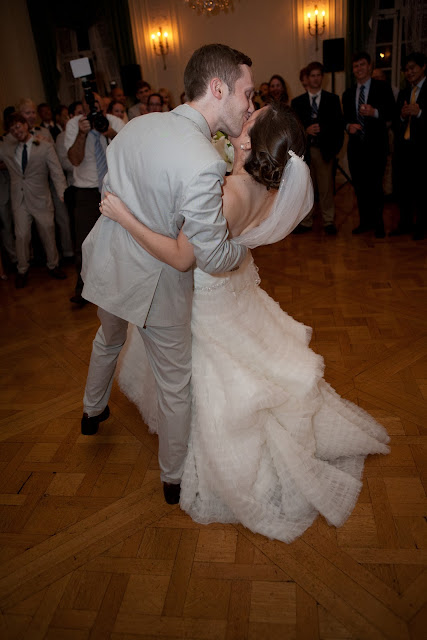In previous weddings on this post, I either use natural light only, or I use ambient light assisted with a single flash mounted to the camera. The problem is that the light is fairly uni-directional, and often it isn't enough. I end up with images that have the light facing the subject, and the sides of the subject and the background are dark. One way around this is to slow down the shutter speed and drag the shutter, but then I get some motion blur or camera shake. Also, the uni-directional light flattens the subject. Bouncing the light off the ceiling helps, and it also reduces shadows cast by the subject onto the background, but then there is a big loss of light from the flash.
With this wedding, I used three lights, One is still on the camera, but the other two are in the corners of the room, remotely triggered. This way, the subject is more "awash with light" as I like to put it. There is just more light on the subject, and the light is in different places. Often, the light falls across the subject, providing a more dramatic image. Shadows are accentuated, and this gives a greater sense of depth.
Of course, the shadows are not necessarily where I want them. They fall across the subject, but that only helps if they fall into advantageous positions. A shadow that falls across a quarter of the subject's face will provide depth. A shadow that falls across three quarter's of the subject's face provides drama. However, a shadow that falls across the subject's entire face often merely serves to ruin the image.
Another effect is a second color temperature of light. Ambient light is often warm. Incandescent lights are still the most common, and they have a warm yellow-orange color temperature. A flash has a truer white color, so the light from the flash looks either stark white, or comparatively blue and cold. Or sometimes both. If there is too much of this, it just looks like the subject is light by police spotlights. If it mingles pleasantly, there are both blue and orange highlights to provide depth and balance. If it mingles unpleasantly, there is just clash.
And, of course, the drama of the subject matter always trumps the technical accomplishments of the image.












No comments:
Post a Comment